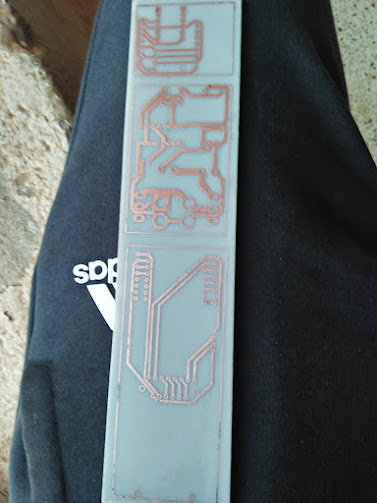Beginners Guide to Rocket Design
Designing a rocket is no walk in the park for anyone (un)fortunate enough to be handed such a task, it's literally rocket science! There are basic mathematics and physics concepts governing the design and flight of rockets that one has to be conversant with which can be overwhelming for a beginner. The understanding of these concepts is developed through reading literature and reviewing previous designs and flight reports. For now, we’ll look into the basic steps that can be followed to get started on the design and flight of a rocket.
1. Laying out Requirements
It is important to lay out the requirements of the rocket (apogee, payload, etc.) as they help to settle down on key rocket parameters. This entails defining what the rocket being designed needs to do. For example, the requirements for the Nakuja N3 rocket are to deliver a small payload to an estimated apogee (max altitude) of 2000m with the main focus being on recovery of the rocket. Once the requirements are known, a designer can begin thinking about various aspects of the rocket.
2. Defining Mission Parameters
The designer needs to define mission parameters. This is essentially noting down what needs to be achieved during the flight of a rocket for it to be termed a success. Mission parameters are often already described since they form the motive/objective(s) for developing the rocket. If we want to deliver a payload to lower earth orbit (LEO) using a rocket, then the mission parameter for the rocket being designed is successfully delivering the payload to LEO. This step is thus easy since the parameters are almost always defined and it is just a matter of adopting them to the specific design.
3. Start Drawing
Once the requirements and mission parameters are set and known, it’s time to start drawing. This step requires significant background knowledge and preliminary research on rocket design. Working from research findings and other literature, the designer creates several sketches based on the requirements. The designer develops as many sketches as are necessary taking a different approach for each design sketch. This is to create a rich selection from which the final design is picked and ensure innovation and critical thinking are applied in the design phase of the rocket. The sketches can be done on hand or with rocket simulator software such as Open Rocket software. An example of an Open Rocket drawing is shown below. Open Rocket has numerous tools that can be used to draw a rocket that is more representative of the real-life prototype and can do simulations to evaluate the given design.
Figure 1: Sample OpenRocket Drawing
4. Whittling down the possibilities
The main challenge here is the selection of the best rocket design for the set mission. The decision is based on how best a design fulfils the mission requirements. Considerations in the N3 design include safety, affordability, sustainability, and easy assembly and disassembly. This process is completed when the best design is identified. From there, the team can proceed further with the design and fabrication of the rocket.
5. CAD Drawings
The next important step is creating a 3D drawing of the rocket using Inventor, SolidWorks or any other CAD software. This helps to convert conceived designs into engineering drawings that can be interpreted and the parts fabricated in a workshop.
Figure 2: Sample Inventor Assembly Drawing
CAD drawings are also used to carry out more detailed simulations and analyses of the rocket to obtain critical values and distribution of force, heat, pressure, drag etc. on the rocket structure. The drawings can be made concurrently using sketches with arbitrary dimensions and then edited to match the final dimensions once the design is settled on. Alternatively, a designer may decide to draw it at the end when all parameters and dimensions have been settled on. Once the CAD drawings are complete, we move to fabrication of the parts and assembly of the structure. After several tests and everything is proven to function as desired, the rocket can be launched and flown.
It is important for a designer to keep all mission requirements in mind in all steps of the design phase. Omitting even a single one will require an addition or alteration to the design that warrants an extensive revision of the entire design which may be tedious and frustrating. It is better to take more time to create a design that fits all set design considerations than continuously restructuring hastily created rocket designs.
These simple steps should get you started on your rocketing journey. It is my hope and prayer that it will be one free of any projectile dysfunctions.
References
Taylor, T. S. (2017). Introduction to rocket science and engineering. CRC Press.
https://blogs.nasa.gov/Rocketology/2015/07/09/designing-a-rocket-in-six-easy-steps/



Comments
Post a Comment